For the past two years, the Lava Ridge Wind project has gathered fans and skeptics.
Proposed by Magic Valley Energy, a subsidiary of LS Power, the up to 400-turbine project is projected to generate 1,000 megawatts, enough energy to power 300,000 homes.
On the other hand, the project has raised concerns from stakeholders regarding cultural resources, wildlife safety, grazing rights and more.
“The public attendance and questions only go to improve the process in my mind,” said Luke Papez, MVE project manager. “They make the analysis more thorough and they ensure the breadth and range of issues are appropriately addressed and they make the outcome of this even better.”
The draft Environmental Impact Statement, a document required by environmental law, is expected to be released in late summer or early fall. It will contain research on each potential impact and be available for a minimum of 45 days for public comment and review.
Here is a recap of the Times-News reporting on the project, including recent events, prior to the release of the Environmental Impact Statement.
A resource council of the Bureau of Land Management, Lava Ridge Wind Energy Project subcommittee members and community members on Wednesday toured the proposed project site.
Made up of 15 members, the advisory council provides a “forum that brings together stakeholders with diverse interests to provide advice and recommendations to the BLM on issues and challenges associated with the Bureau’s multiple-use mission,” according to a press release. The job of the subcommittee is to conduct research and compile information about the proposed project.
“The Idaho Resource Advisory Council and the Subcommittee provide an important avenue for the BLM to gain public input on the proposed Lava Ridge Wind Energy project in addition to the public involvement opportunities that the National Environmental Policy Act process offers,” Karen Kelleher, Idaho BLM director, said in a press release.
The tour started at the BLM’s district office in Twin Falls with an overview by Papez, then continued with stops at Minidoka National Historic Site, Wilson Cave, and Sid Butte. The tour concluded with a public comment period back at the district office.

Although the event was open to the public — and more than 150 people attended — the presentation was aimed toward the council and subcommittee members.
Attendees learned about the importance of the Minidoka National Historic Site from Anna Tamura, a program manager with the National Park Service.
The site commemorates Japanese Americans imprisoned at the Minidoka Internment Camp — known locally as the Hunt Camp — during World War II.
The original plans had the closest turbine placed 1.8 miles from the historic site. Survivors and their descendants, however, argued the project will still be on top of the historic footprint of the camp, which included nearby agricultural areas.
Paul Tomita previously told the Times-News he was 3 years old when he was imprisoned at the camp because of his physical appearance.
Some 13,000 Japanese Americans lived within those prison gates before the camp closed on on Oct. 23, 1945.
“First of all, I want to say that you are standing in a place of national significance,” Tamura told attendees.
Minidoka was listed on the National Register of Historic Places in 1979, became an Idaho Centennial Site in 1990, was designated a unit of the National Park System in 2001, and became a National Historic Site in 2008, she said.
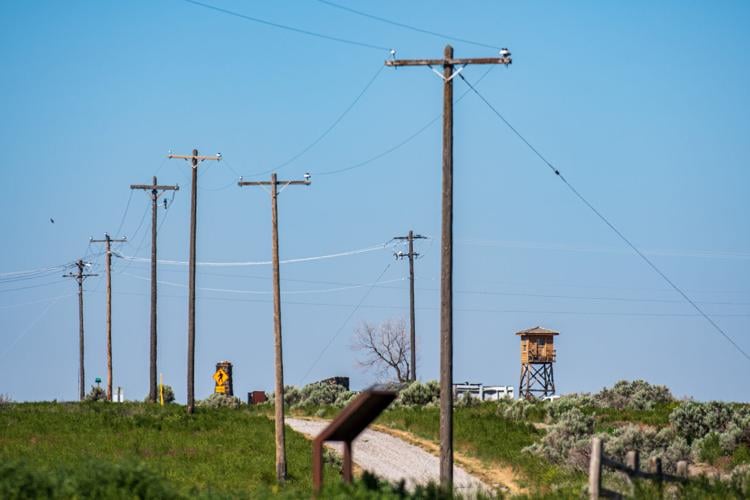
This year, the National Trust for Historic Preservation listed Minidoka among the 11 Most Endangered Historic Places in America for 2022.
“If constructed as currently planned, the project could irrevocably change Minidoka’s landscape, potentially creating a visual wall of hundreds of wind towers, each taller than the Seattle Space Needle, with blades exceeding the wingspan of a Boeing 747,” the National Trust for Historic Preservation wrote in the announcement.
Erin Shigaki, whose father was born at the Minidoka site, told the Times-News that if this was a beloved national park, a project of this size in the vision line wouldn’t be considered.
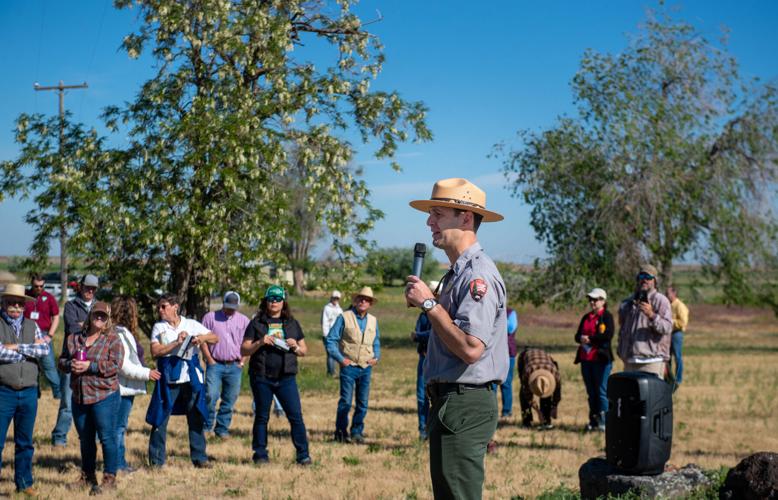
“We’ve had to fight and fight to have this history recognized and I think this is one more battle, unfortunately,” Shigaki previously told the Times-News.
Minidoka National Historic Site is 3 miles from one end to the other, Tamura said.
“The turbines would appear about four times the size of the tallest trees and a string of them, 18 turbines going this way, and then all along the viewshed,” she said.
During the preservation of Minidoka, survivors wanted to convey the remote nature of the site.
“They wanted for people to understand that this was intentionally a remote location, I think you all get that by driving out here,” Tamura told the audience. “This was intentionally placed in a very remote and isolated setting.”
Shigaki and Tomita are among the group of people who are concerned the feeling of isolation could be lost if the turbines are placed within the viewshed.

“It would absolutely ruin the atmosphere of desolation and despair,” Mary Abo, another Minidoka survivor told the Times-News. “That’s part of the lesson.”
Papez said they understand the site is well-recognized and important. He is confident the BLM will find a solution during the EIS process.
Part of the EIS is a range of alternatives, which could include moving the turbines away from the site.
“I am glad people have expressed their concerns so they can be addressed in the EIS process,” Papez said.
Minidoka County Commissioner Wayne Schenk asked how far the turbines would need to be before they were no longer visible.
Lara Rozzell, with the Pacific West region external energy and minerals program, said it depends on the curvature of the earth and landscape.
Rozzell said there are not currently any turbines of this size on land in the U.S., meaning the BLM has been unable to analyze the potential visual impacts. The Bureau of Ocean Energy Management, however, has analyzed several projects with 840-feet-tall turbines. Magic Valley Energy proposed turbines up to 740 feet.
The Space Needle in Seattle, Washington, is 605 feet tall.
The report found “adverse effects” to visual and cultural properties at 16 and 18 miles and 22 miles for taller turbines.
“The definition of ‘adverse effects’ is basically if you are here and if those turbines are what draws your attention, if your attention is drawn away from the honor roll or the atmosphere here, then that is called an adverse affect,” Rozzell said.
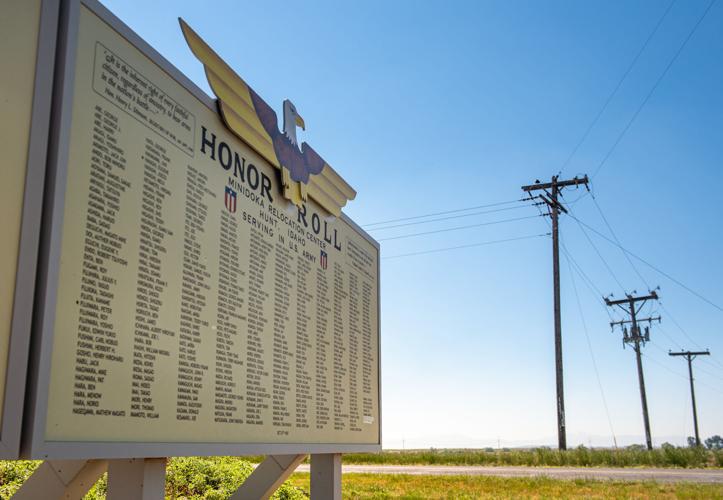
So far Lincoln County Commissioner Roy Hubert is the only commissioner to come out in full opposition of the project.
During a Lincoln County Commission meeting in early June, Hubert said he has received phone calls from the public about his position.
“I want you to know that I’m 100% against the Lava Ridge project,” Hubert said during the meeting. “I want that as part of the minutes today, that I am opposed to it in every way.
“I’ve done my research.”
Hubert wanted the group to present a resolution on whether the commission supported or opposed the project.
As a whole, the commissioners elected to wait until the EIS and mitigation plans are released later this summer or early fall.
“If they look good for our citizens that’s one thing, and if they look bad, I would be totally against them,” Commissioner Rebecca Wood said. “But I would really like the science and all the information that we have helped to provide, and see what’s coming out of it.”
Wood said she heard commissioners in other counties are also waiting to form an opinion until the report is released.
“I think that is a very reasonable position to take,” Papez said. “I am hopeful that the members of the public and the community will also recognize that this is not being rushed and these questions are being addressed. This is a long process that has not been concluded yet, let’s wait till we get concrete answers before judgment is rendered.”
In terms of benefits, MVE is estimating the project will provide more than 1,000 jobs during the construction period and bring in more than $7.5 million in tax revenue annually after the construction.
The Lava Ridge Wind Project will create approximately 20 permanent jobs.
Lincoln County Commissioner Joann Rutler previously told the Times-News she was excited about the tax revenue for her community.
“There is a stigma in Idaho about green power but education is key,” Rutler said, “and listening to people.”
Connie Stopher, past executive director of Southern Idaho Economic Development, last year told the Times-News that the tax revenue could be used for a variety of projects.
For example, communities could decide to reinvest in infrastructure upgrades, such as water or wastewater, which are typically expensive projects jurisdictions don’t have the money to complete. Upgrading these sorts of facilities could attract developers to build new homes in the area, something Idaho is in desperate need of.
“When we do economic development improvement projects, most of those companies want there to be infrastructure at the site and ready to go,” Stopher said. “If (communities) have new tax revenue and can make those investments, then they can be ready for the next project that comes along.”
Another benefit could be drawing students into the College of Southern Idaho’s Renewable Energy Systems Technology program and possibly providing jobs for graduates.
Students who complete the two-year program earn an associate’s degree and can go straight into working on projects such as the one proposed by MVE.
“Lava Ridge would be phenomenal for us,” said CSI professor Eli Bowles. “Not only for the area but for the college as well. It could create a lot of up flow, and it already has.”
After stopping at Minidoka, participants Wednesday visited Wilson Cave and Sid Butte.
An archaeologist, recreation planner, wildlife biologist, and realty specialist discussed the potential impacts on grazing, archeological sites, outdoor recreation and wildlife.
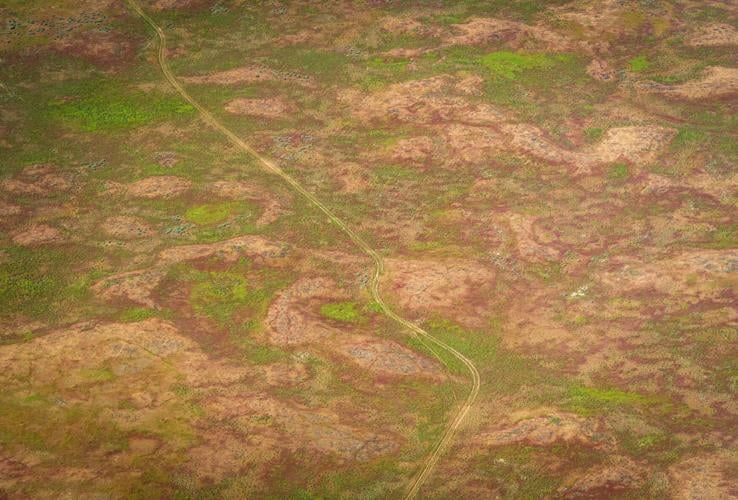
Previously, questions about the protection of the Eastern Snake Plain Aquifer have been raised.
Papez said the wind farm shouldn’t affect the aquifer, because the supports for the wind turbines go down only 12 to 15 feet and are wider than they are deep, while the water table is 200 feet below ground level. This concern will be addressed in greater detail as part of the EIS.
Grazing rights are another point of friction.
The Times-News previously interviewed John Arkoosh, whose family has grazed sheep and cattle on the Star Lake Grazing Allotment for nearly a century.
Located on the border of Jerome and Lincoln counties, the allotment is more than 98,000 acres, managed by the BLM.
The land is used by numerous multigenerational ranchers whose operations employ close to 100 people, Arkoosh said. The allotment has 12 permits in total.
During the construction phase over half of the allotment could be unavailable.
“I don’t think this is the place to build this project. It just doesn’t make sense to me,” Arkoosh told the Times-News. “We’ve spent years developing this and taking care of it and I don’t understand how they can just turn these guys lose to completely change the face of the earth.”
Members of the Star Lake Grazing Allotment participated in the public scoping period by submitting a letter about their concerns.
Arkoosh said they are worried about grazing losses, difficulties with fire suppression, the impact of road building, damage to prior range improvements and more.
Papez said he believes wind energy and grazing can be achieved simultaneously.
“It’s definitely our opinion, and well established across many other wind energy developments, that wind energy and grazing co-exist very well,” Papez said. “There are literally thousands of wind turbines between Texas and North Dakota that are on operating cattle ranches.”
Magic Valley Energy also hired a rangeland consultant to help them determine the best course of action moving forward. The company could provide financial assistance if ranchers are forced to relocate during the construction period.
During the public scoping period, the Lava Ridge Wind Project received more than 1,400 comments. Of those comments, more than 97% were from individuals. The other 3% were from organizations and agencies.
Almost two-thirds of the comments were form letters. This category covers letters with the same comment that were forwarded to different people to submit.
Southern Idaho Regional Communications Center and Project Mutual Telephone both expressed concerns that the project could interfere with their operations.
The Idaho Military Division, which contains the Idaho Office of Emergency Management, also submitted a public comment regarding microwave radio transmission paths.
“The services carried on these paths are vital as they service statewide emergency services, law enforcement, federal/state/county agency customers,” the division wrote. “Any interruption or degradation of signal would be detrimental and will not be allowed to happen.”
In February, the BLM presented four alternative plans during an Idaho Resource Advisory Council meeting, addressing concerns about communications.
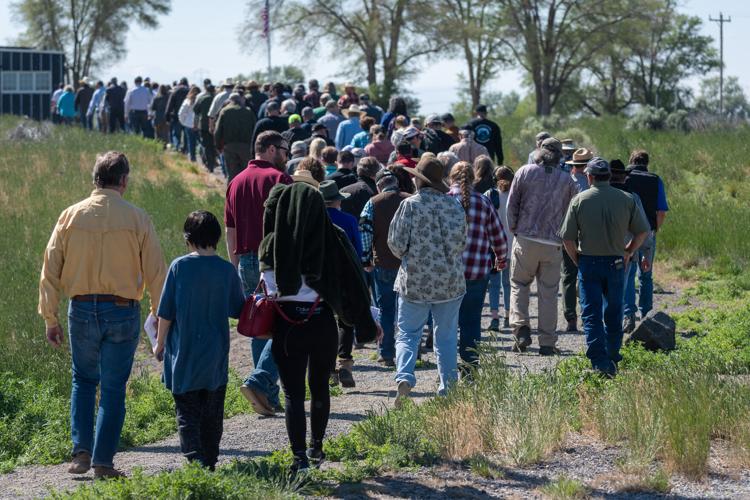
The public had another opportunity to voice their concerns during the tour Wednesday.
Some commenters voiced outright opposition while others wanted more research done during the EIS period.
One individual brought up the extensive network of roads that will be built to support the project.
“If you get on your phone and GPS from here to Price, Utah, that’s 337 miles, that’s four hours away,” the public member said. “That’s how many roads they are going to put out there. So that is just a good perspective.”
Regardless of the outcome, everyone wanted the BLM to thoroughly consider the potential impacts and listen to lifelong Idaho residents.
“All I ask from the BLM is just to be honest,” one participant said. “Because no honest man on earth could stand up and say, ‘That is something we can live with.’ It would be impossible.”